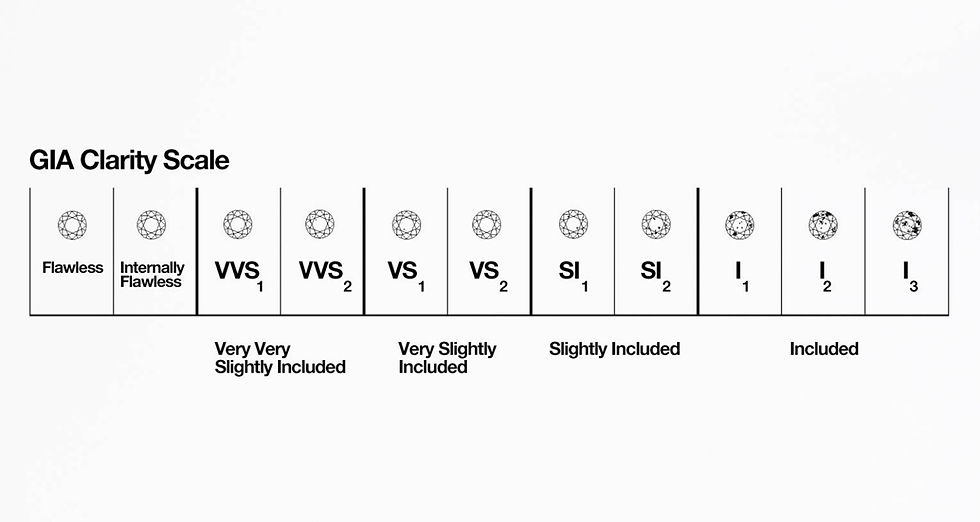What are the 4 Cs of Diamonds?
- Iona Buxton
- Jul 9
- 3 min read
When choosing the right diamond there are 4 factors that need to be considered – Colour, Clarity, Cut and Carat. The 4 C’s were created by GIA to establish a fair grading system for all diamonds so they were priced fairly. It also helps break down the different components of a diamond to understand what it most important to you when it comes to choosing the right stone for the piece-
Do you want to be able to say that your ring is 2ct plus in size?
Must it be the whitest of white Diamonds?
Does the stone have to have the optimum sparkle or would you rather it to have the character of an old cut Diamond?
Or do you want to be sure you can’t see any visible inclusions in the stone?
Whatever’s the most important characteristic, the 4c’s grades helps guide you to know exactly what you are purchasing.
Colour
When we look at the colour of a Diamond what we are evaluating is the absence of colour. At GIA and other laboratories, the grading of colour is done in a controlled lighting environment to ensure the grading is precise and accurate.
The whiter the stone the higher the colour grading. The colour is based on the GIA colour grading scale D-Z, D for colourless and Z for light (yellow, brown or grey).

Clarity
Diamonds form by extreme heat and pressure within the earth (and in laboratories). Clarity characterics are like birthmarks for a diamonds, and are not uncommon. The clarity grade is based on the size, location, visibility and number of inclusions or blemishes.
Internal and surface reaching charateristics are called inclusions
External features are called blemishes.
The clarity scale starts from Flawless to Included. The stones are clarity graded under 10x magnification. A diamond with no inclusions or blemishes will receive a Flawless grade (FL) and a diamond with obvious inclusions may receive a Included (1,2 or 3) grade.
Most commercial diamonds you will find are between the VS and SI grade. Generally, the inclusions in these stones are not visible to the naked eye but I check every stone closely for every client to ensure the clarity is where it needs to be.

Cut
The cut is down to the craftsmanship of the diamond cutter. It’s important because a well cut diamond is essential to how it interacts with light and therefore how well it sparkles.
Cut not only refers to the shape of the diamond (round, oval, pear shape, emerald cut etc) but also the overall design on the stone, the arrangement and proportion of the facets.
Cut grades are only given to round brilliant cut diamonds because they are the only cut with standardised facets. There are varying components that are assessed to give a diamond their cut grade which can be anything from Excellent to Poor.
Carat
Lastly, carat refers to the weight of the stone. One metric carat is 200 milligrams. The terms carat came from carob seeds which were used as early as the 1500's to help diamond dealers weigh their stock.
Some sizes are considered ‘magic sizes’ due to their desirability – 1ct, 1.5ct, 2ct etc. The price per carat jumps when you hit those magic numbers so even thought visually it’s very difficult to distinguish the size difference between a 0.99ct diamond from a 1.00ct diamond, the price is significantly different.
Please note that grading is only applied to Diamonds. Coloured stones such as sapphires, ruby, emeralds etc do not have a grading system. This is because coloured stones vary so much that there is no way of having one standard grading system for them all. Prices of coloured stones do also consider the cut, clarity, colour and carat but depending on the material, one category will weight more then another.
For example, it's common to find Aquamarines in large pieces so jumps in the price per carat as you hit the magic sizes doesn't exist like it does for Diamonds. In fact, when they get very big the price drops!
If you have any questions on the 4C's or what the best diamond is for you then don't hesitate to reach out by email or phone.
hello@ionabuxton.com / 07734729316
.png)



Comments